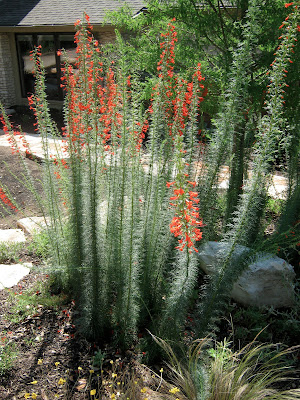 | |
| This cactus had no label. It's actually about 12 inches tall - looks huge here! |
Don't get too excited. Don't put away the shorts and sandals just yet.
Last night we slept with windows open for the first time in three months. It was lovely.
Today, with birthday money in my pocket, my daughter and I stopped at our local nursery. I found a cool columnar cactus and a beautiful Buddleja or butterfly bush. She found the strangest little plant called a stone plant. She told her Dad later it looked like a troll's toe. It does.
This afternoon I spent time in my garden, doing some fall planting. I know that fall is the best time for planting in Central Texas. Unfortunately, I don't always do what is best. This extends to more than gardening. Hence the Friday night chocolate binges followed by Saturday morning migraines.
But I had new plants! And it was beautiful outside! So I planted.
I also piled up some topsoil in a mound and planted a desert willow given to me by my mother-in-law a few weeks back. It looks saddened by its sojourn in its pot, but I hope that it will perk up now that it has been permanently placed. I'm not showing you a picture of that - that's a blogger's privilege. We only have to show you what makes us look good.
 | |
| This Buddleja did have an i.d. It was on the pot, which I promptly threw away. Guess I'd better dig that out of the bin. |
About a month ago, I started work full time with Texas Parks & Wildlife Department. I am working on web content for the state parks division, and I'm tickled pink.
Blogging will have to take a back seat to the paying job, but I will try to post occasionally.
Happy first day of fall!


















































